Aero is such an interesting event for many reasons. Among the most significant of these are the large number of aircraft introductions or the newest development projects one discovers in the vast gymnasium-sized halls … eleven of them in total. It can be hard to cover all the square meters, which although not as enormous as giant outdoor American shows, are nonetheless so packed with aircraft that one gets sensory overload before you’ve seen them all.
The world premiere of BlackWing was such a project. Here is the first light aircraft I’ve seen from Sweden; others may exist but I’m not aware of them. This sleek speedster uses the ubiquitous Rotax 912 to achieve what they state as stunning speeds up to 400 kilometers per hour (250 mph or 217 knots) and this from only 100 horsepower! Of course, this won’t work as a Light-Sport Aircraft but BlackWing is LSA in size and concept other than its blazing speed. She’s lovely and steadily drew a crowd.
Across the way — the convention center housing Aero is two rows of giant halls, an “A” and “B” side — was the equally speedy Swiss airplane called Risen. Later we hope to put up a video interview I did with developer and company chief Alberto Porto. Risen is also aimed at the European microlight market that allows qualities not permitted on a U.S. Light-Sport. As Alberto explained, designers must achieve a maximum stall speed while keeping weight within the 472.5 kilogram limit (1,040 pounds), which number includes an airframe parachute that nearly all have because they are required in Germany.
Risen has the works all as standard equipment Alberto described: retractable gear, in-flight adjustable prop, power-opening canopy, a brilliant implementation of Fowler flaps that seem to extend forever, 48-inch-wide cockpit, three-screen Dynon SkyView, autopilot, all carbon fiber, emergency parachute, luxury interior, and I’m surely leaving something unsaid. Of course, you can expect to pay for all this, to the tune of about 200,000 euros. Yet if you want maxed out performance for the class, Risen maybe it.
Pipistrel made its usual splash showing their WattsUp electric powered trainer model, now renamed Alpha Electro conforming to the naming convention used on their previously electric Taurus Electro motorglider. Alpha was introduced as their low-priced entry as we saw in the USA a few years back. Now, they’ve installed an electric motor and easily-removed batteries in the compartment that otherwise holds the Rotax 912 they use on most other models and on gasoline-powered Alphas.
The Alpha Electro concept is that you fly basic flight training at or near the home field. It can make about an hour’s flying on the batteries of today, but those cells can recharge in 45 minutes, plus a very wide prop aids regeneration of the batteries as you descend for landing with the now windmilling prop pushing charge back to the cells. Upon completing the training flight, a technician replaces one set of batteries with another and back up the airplane can go. Pricing is about 120,000 euros so flight schools may see merit to using electric power for instructional flights. On a video my journalist friend James Lawrence talks about his planned travel to check out this capability. Watch for it later.
Alpha Electro is here now, but I found another electric airplane project that I was tempted to pass by as merely a concept that might go nowhere. However, it was simply too impressive so I spent some time talking with principal developer and current airline pilot, David De Ridder. He and his team have formed Green Tech to develop Ypselon. My visual fascination with the project stopped me, but it was David’s reasonable, honest-sounding approach that drew me in fully. He’s not blowing smoke about when this can happen, giving dates of 2017 and 2019 for finalized development and reaching the market.
Like Alpha Electro, Ypselon is an electric pure play but unlike the Electro’s training mission, Ypselon is aimed at the recreational user who wants a performer. Seating is tandem with even the aft seat occupant able to see down in front of the wing. Using electric power, a rear prop doesn’t need a driveshaft as from a gas engine so the design can be incredibly clean. Though it will be some time before we see more, David says he has funding to proceed and as I’ve long maintained, the most exciting electric-powered aircraft are coming from the light end of aviation where they are possible today. I’ll keep an eye on this one!
Going even further into the fuzzy future, I discovered another “wow” project from ScaleWings. If that name sounds vaguely familiar to you it may be because you remember the mind-boggling FK-51 project reported earlier (video) that makes a highly authentic P-51 lookalike that can fit both European microlight or U.S. LSA categories. Indeed, Hansen Air Group is awaiting their own FK-51; it won’t be available by Sun ‘n Fun, but look for it at Oshkosh and prepare to spend serious time looking over this amazing production.
Since that aircraft is coming to reality, the flying car project the ScaleWings designer showed at Aero caught my attention. One problem I have with most roadable aircraft is that they must leave their folded wings still exposed to road rash while in auto mode. That worries many folks so when I saw the ScaleWings SW91 Aeros project I got it. This surprising project employs six rotors four of which pivot back inside the car body for road use, thus no wings are exposed to that dump truck with its load of rocks. It seems pretty far out and may never get to market but the idea is certainly intriguing.
Back down to Earth comes the final form of Beringer’s Anti-Ground Loop tailwheel concept. I’ve written about this earlier and it is a superbly simple way for a pilot to avoid the dreaded situation of the tail wanting to get sideways during landing (if you do not keep the rudder moving to hold the taildragger straight enough). The idea was correct before but now the company — celebrating its 30th anniversary this year — displayed the final version in two sizes.
I shot a video with Beringer front person Claire Beringer at Aero and we’ll hope to get that up in the future, but the final iteration is even more elegant than the original solution. They’ve now completed their typically gorgeous hardware to make the tailwheel a cantilevered construction (photo). This company has made inroads throughout the aviation spectrum from LSA to Cirrus and beyond. If you love the idea of taildragger flying but feared the ground looping potential, Beringer’s AGL Tail Wheel can relieve your concern while yet preserving the ability to pivot around within a wingspan, through a cockpit control that unlocks the tailwheel for full swiveling but holding it to a small motion for takeoff and landing. Good job, Beringer!


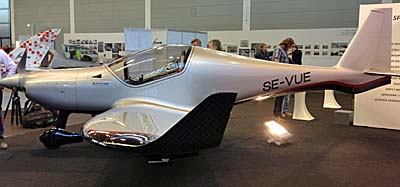
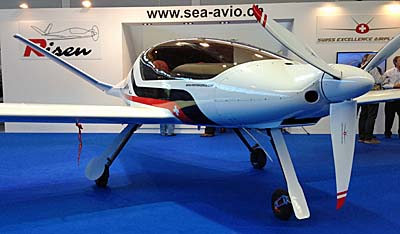
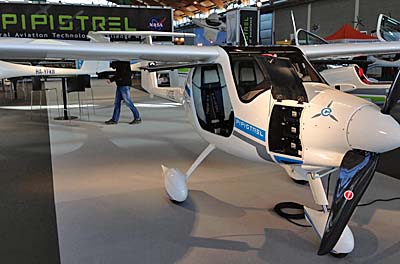
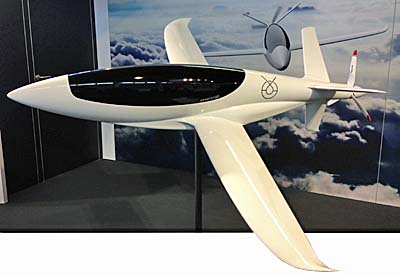
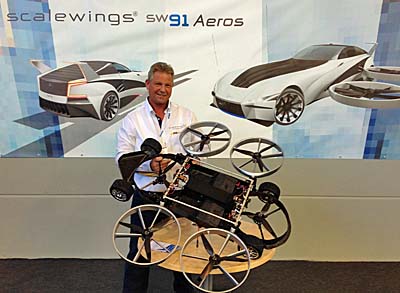
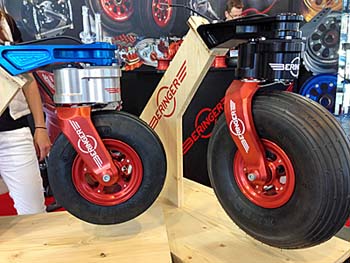
Leave a Reply